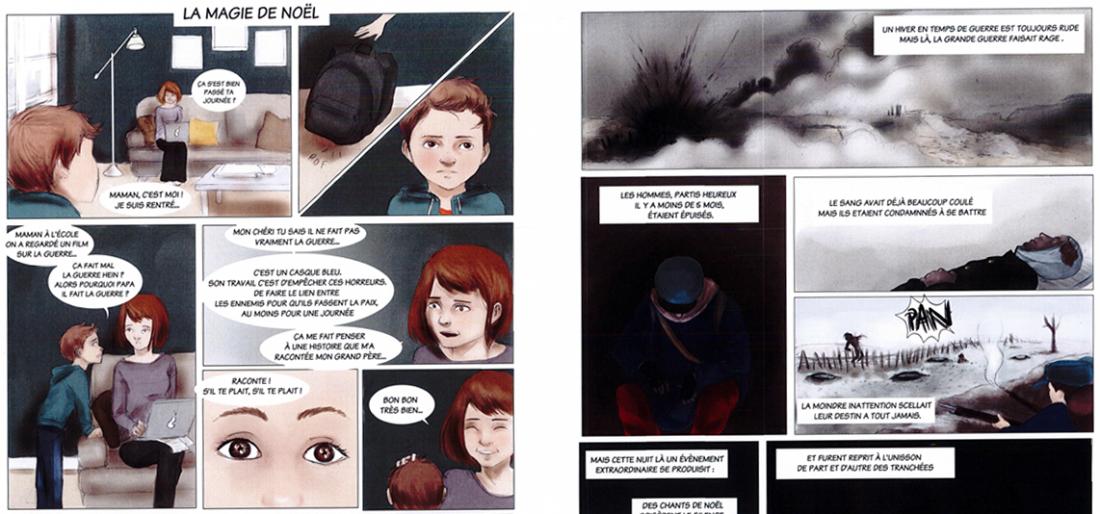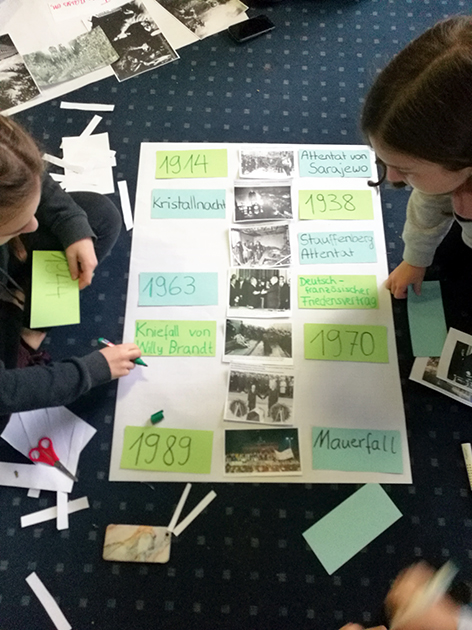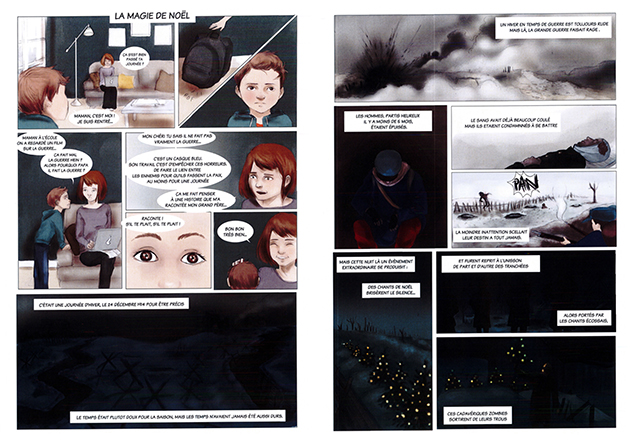The common language of cartoons

For ten years now, the Bulles de Mémoire (“Memory Bubbles”) competition has made cartoons a medium for historical knowledge and a tool for passing on memory in the hands of school pupils. Exported to Germany, the competition now offers French and German youngsters an insight into the values and memories they have in common.
It was in 2011 that the National Office for Veterans and Victims of War (ONAC-VG) came up with the idea of organising a children’s art competition on the remembrance of contemporary conflicts that would be accessible to as many children as possible. The aim of the initiative was to be an additional, multidisciplinary art offering for young people, outside the school syllabus, that perfectly complemented other educational programmes geared to remembrance: the Concours National de la Résistance et de la Déportation (“National Competition on Resistance and Deportation”, or CNRD), organised by the Ministry of National Education in collaboration with the major remembrance foundations and the Ministry of the Armed Forces, and the ONAC-VG competition on the First World War for middle-school students, titled Petits Artistes de la Mémoire (“Little Artists of Remembrance”), which already impact a large number of students and teachers.
At the origin of the project, then, was the idea of acting in complementarity to existing initiatives, being accessible to young people and in a current form of expression that they understand: cartoons. According to a recent survey, Les Français et la BD 2020 (“The French and comics 2020”, IPSOS, for the Centre National du Livre), over 80 % of 9- to 13-year-olds say they regularly read comics (a total of 12 per year) and 74 % of 14- to 15-year-olds are regular readers. Comics are therefore a strong marker for French young people and, according to the same survey, reading comics does not replace reading other literary genres, but rather complements it. This “reading for pleasure” can also be an opportunity to deepen their knowledge, namely of history.

French and German prize-winners of the 4th Bulles de Mémoire competition take part in an intercultural workshop
on the great events of the 20th century. © ONAC-VG
Building on its growing success in the areas where it was launched, Bulles de Mémoire became a nationwide competition in 2014. The principle is simple: to get the viewer to think about contemporary conflict by producing one or more cartoons based on a specific theme, which changes every year. It’s a catchy idea: the competition is open to supervised groups, whether from schools or youth centres, and also to young people wishing to take part as “independent entrants”, in their own free time. Modern in its educational approach, it invites young people to develop autonomy, research skills and critical thinking, and is therefore fully in line with an active citizenship strategy. By linking the pleasure of discovery to learning about historical events and their present-day legacy, Bulles de Mémoire confirms the relevance of a fun approach to passing on memory. It also comprises all the prerequisites of remembrance work, by combining documentary research, cross-checking of sources, listening to eyewitness accounts of the conflict, and personal interrogations.
In 2018, the competition took on a new dimension, when the Volksbund Deutsche Kriegsgräberfürsorge (VDK), the German counterpart and partner of ONAC-VG for remembrance policy and the upkeep of war graves, decided to extended the competition to Germany. That year of commemoration of the end of the First World War, the two organisations held a binational award ceremony for the prize-winners from the two countries, and invited them on a joint study trip lasting several days. First in Paris, then in Berlin, the young award-winners visited remembrance sites and got to know each other by taking part in workshops run by the Franco-German Youth Office (FGYO). They learnt how cultural differences exist, but alongside them are also shared memories and values that transcend identities and past resentments. It gave them a practical experience of their European citizenship, built around the promotion of peace and a critical, realistic and responsible approach to history. United around a common means of expression enabling them to properly express their own thoughts, they found they could communicate and get messages and emotions across, despite the language barrier. By offering a common language, in which pictures are more important than words, cartoons are an ideal medium for developing a shared remembrance among young people.

La magie de Noël (“The magic of Christmas”) by Ariane Toussaint and Léonard Pasty, first prize, independent entrants – high school, in the 4th Bulles de Mémoire competition, 2017-18. © ONAC-VG
That is the thinking behind ONAC-VG and the VDK jointly organising this competition which, despite the new restrictions imposed by the global health crisis, continues to get young people involved on both sides of the Rhine. In November 2020, the French and German prize-winners, whose entries were on the themes of commitment to the Republic (France) and democracy (Germany), took part in a virtual meeting and a creative workshop around their award-winning entries. In 2021, and even more so in 2022, ONAC-VG and the VDK hope to be able to bring these young Europeans together once more around strong themes: the involvement of women and children in contemporary conflicts. Bulles de Mémoire is also set to become an increasingly Europe-wide competition, as the Belgian War Heritage Institute (WHI) joins the initiative by launching the competition in Belgium.

